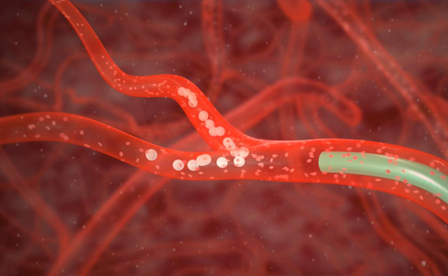
A new analysis of the MORE data on 606 mCRC patients treated with SIR-Spheres Y-90 resin microspheres at 11 US medical centres, published late last year in Clinical Colorectal Cancer, confirms that patient age is not a barrier to appropriate treatment with the product, Sirtex has reported.
“The analysis of the data from the MORE study confirmed that age alone should not exclude patients from being considered for, or receiving, SIR-Spheres Y-90 resin microspheres treatment,” says principal study author, Andrew S Kennedy, director, Radiation Oncology Research, Sarah Cannon Research Institute. “Because older mCRC patients tend to receive less intense systemic therapy, local liver tumour control with selective internal radiation therapy, or radioembolisation, may provide added benefits to this population. We look forward to continuing our research in this field to determine the most effective treatments for this patient population and improve outcomes.”
The new MORE analysis divided the 606-patient population into two groups, 446 patients under age 70 years at the time of treatment and 160 patients age 70 years or older when treated. Researchers also separately analysed the data for 90 very elderly patients who were age 75 and above. Mean ages in the younger, elderly, and very elderly groups were 55.9 +/- 9.4 years, 77.2±4.8 years, and 80.2±3.8 years, respectively. The researchers found that regardless of their age, the patients tended to have similar baseline characteristics.
However, the elderly patients were more likely (p<0.001) to have liver metastases that did not occur at the same time as their primary tumour (metachronous tumours) or to have undergone previous surgery for their primary tumour (p=0.009). Elderly patients also tended to have received fewer lines of chemotherapy treatment (p=0.036) or no previous chemotherapy (p<0.001) at all and were likely to have experienced a longer period of time between diagnosis and radioembolisation (p=0.011). In addition, the older patients were less likely to have received more than one radioembolisation procedure.
Overall survival was statistically the same (p=0.335) between the older (9.3 months) and younger patients (9.7 months). There were also no age-related differences for any grade of adverse event (p=0.433), including the more serious or grade 3+ events (p=0.482) within 90 days of treatment. Of note, gastrointestinal side effects were reported less frequently in elderly patients than in younger ones.
Similar profiles were also observed in comparisons between patients 75 years and older and those who were younger than 75 years old. Median overall survival was 9.3 months compared to 9.6 months (p=0.987), respectively, and there were no significant differences in either grade 3+ adverse events (p=0.398) or any adverse event (p=0.158) within 90 days of treatment.












